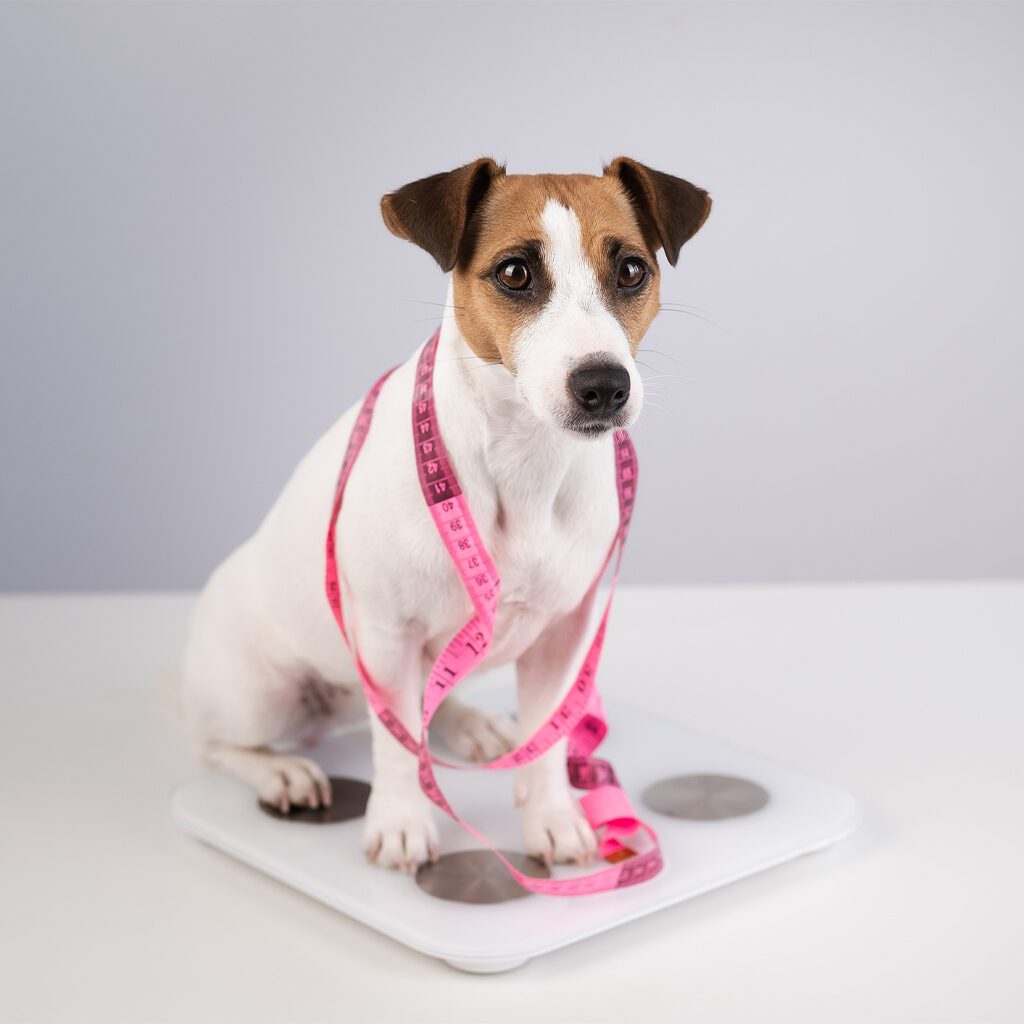Addressing the Epidemic
If you’re worried that your pet’s weight might be compromising their health, we have answers for you. Here, local veterinary experts share advice for addressing pet obesity and its many related health complications.
Did you know that an estimated 58% of cats and 54% of dogs in this country are overweight or obese? According to Dr. Tyler Pilkington of the Animal Clinic of Chattanooga, “Almost half of our patients are overweight or obese. Our office treats overweight pets, I’d say, daily to hourly.” National data reveals this condition has reached epidemic proportions in the U.S. – and unfortunately, it can cause a long list of health complications for our furry family members. “Fit pets will live an average of two years longer than their obese counterparts,” Dr. Pilkington adds.
Obesity also impairs your pet’s quality of life. Being unable to do things they enjoy, like running and playing, creates a perpetual cycle of weight gain. To prevent and combat this growing health concern, pet owners can educate themselves to act as advocates for their pets’ health.
Causes


There are multiple routes by which a pet can gain excess body fat. Breed, age, neuter status, sex, illness/chronic conditions, and the owner’s influence can all contribute. How much activity and food a pet receives is directly controlled by the owner.
“I think one of the biggest problems is that most people really don’t know what a fit dog looks like – they’re really supposed to have a more defined waistline. That can be a better indicator than a number on a scale,” explains Dr. Tai Federico of Riverview Animal Hospital.
Prevention
“Many owners don’t realize, it starts with just a couple of extra pounds. As the pet ages or its environment changes, it can sneak up on them. And it can become too much very quickly,” says Dr. John Lindsay of Main Street Pet Wellness Center.
If your dog or cat is at a healthy weight, the best thing you can do is help them maintain a healthy diet and activity level. In general, there are many ways to prevent detrimental weight gain:
- Understand your pet’s caloric needs
- Make sure your pet gets plenty of physical activity
- Choose the right food type and amount
- Limit or eliminate table scraps
- Limit treats
- Regularly monitor the animal’s weight
According to all three vets, you should be able to feel and see the outline of your pet’s ribs, their waist should be easily identifiable (especially from above), and their belly should be tucked up when viewed from the side – not sagging. Check out recommended weight ranges for various breeds on the Association for Pet Obesity Prevention website at petobesityprevention.org. If you’re still concerned, take them to your vet for an exam.
Diagnosis
Obesity is diagnosed in pets very similarly to in humans. Your vet will assess the animal’s body and find their “body condition score (BCS)” – basically, the equivalent of a human’s Body Mass Index (BMI).
“We evaluate body condition using a standardized scoring system on a scale of one to nine. Then focus on actual weight as a secondary tracking tool. A pet’s ideal body condition will be a four or five out of nine. A seven is overweight, and an eight or above we classify as obese, meaning more than 30% overweight,” Dr. Pilkington explains of the examination process.
Treatment
Even though overweight and obese pets are at heightened risks for health complications, the process to help your furry loved ones get back on track and enjoy a fulfilling lifestyle is very simple. It just takes commitment on the owner’s part.
Treating obesity requires doing a bit of research and/or working with your vet to understand the best diet options. Your vet can suggest a meal plan that works best for your pet’s specific needs. Higher protein diets can help your pet feel satisfied longer, allowing you to reduce their intake.
Limiting treats is key too. “I like to give my dogs kale stems and baby carrots in place of treats,” says Dr. Lindsay. “If you get excited about what you’re giving them, they’ll be excited too.”
Dr. Federico emphasizes, “The single most important factor in weight loss is their diet. You can’t outwork your diet.” Increasing their physical activity can play a role in reducing weight, but depending on how overweight they are, it can actually be detrimental.

Until your pet is in a safe weight range, excess activity can be hard on their body, bones, and joints and could even lead to injury.
However, if you’re implementing activity to maintain a healthy weight, Dr. Lindsay recommends a minimum of 30 minutes of leash walking each day, as long as your pet is healthy enough to do so. Playing games indoors with them is a great alternative during unfavorable weather. Play fetch with dogs and let cats chase after toys for about half an hour if they aren’t getting outside that day. Think of it as having prescribed playtime. As Dr. Pilkington says, “Acknowledging and treating problems, then keeping your pet in a healthy body condition will likely allow you to enjoy each other longer. And that’s good news!”

Dr. Tyler Pilkington
Veterinarian and Co-Owner, Animal Clinic Inc. of Chattanooga

Dr. Tai Federico
Riverview and Owner, Riverview Animal Hospital

Dr. John Lindsay
Veterinarian and Owner, Main Street Pet Wellness Center Chattanooga Veterinary Network




